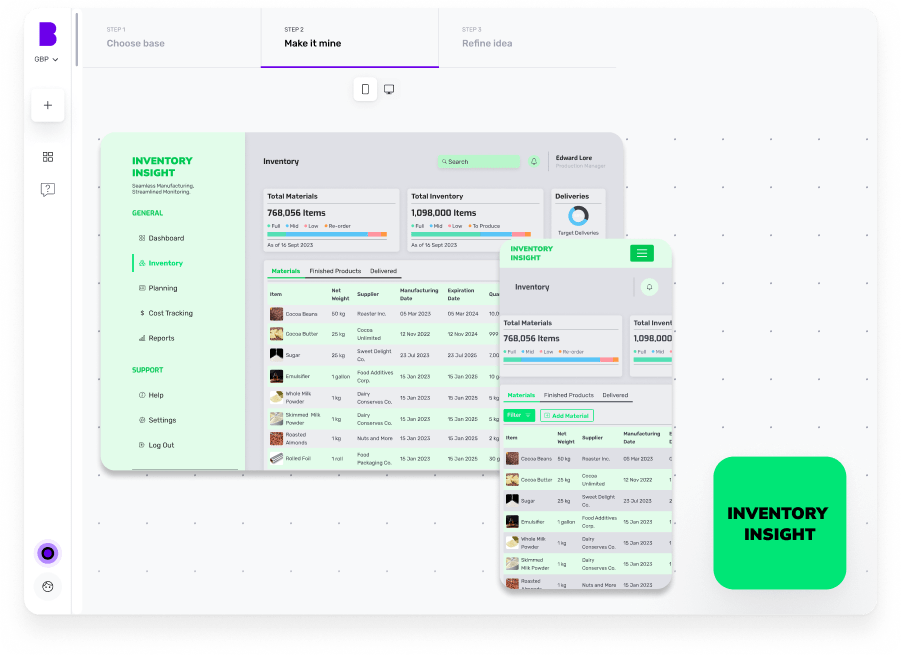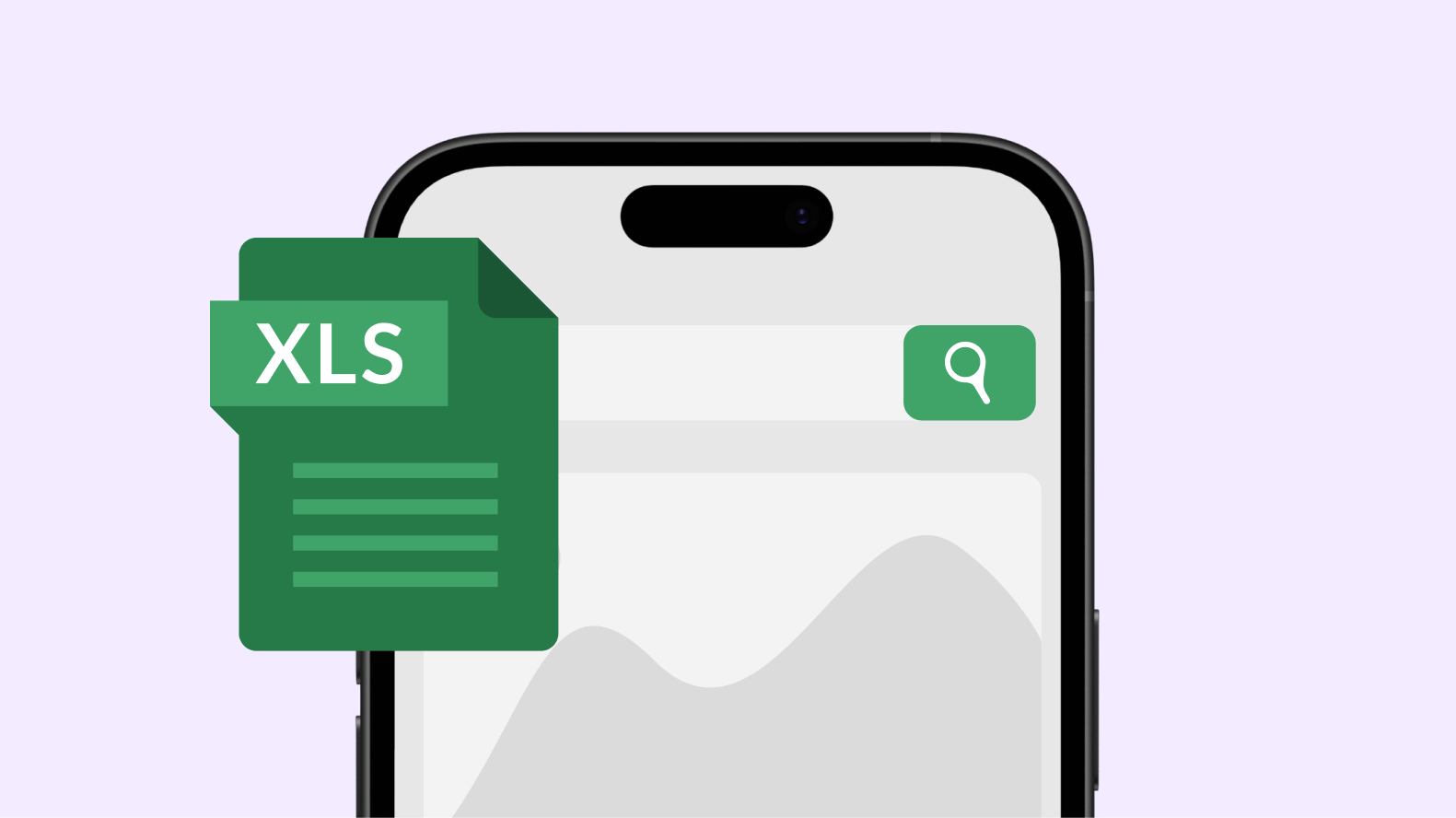Love them or hate them, spreadsheets are one of the most versatile tools. We use Google Sheets and MS Excel for just about everything, from planning family budgets to tracking project timelines and managing business operations.
But here’s the thing, spreadsheets can be a bit of a double-edged sword. On the one hand, they're incredibly user-friendly for small-scale tasks where you can quickly input data and perform calculations.
However, as your data grows and your processes become more complex, spreadsheets can start to show their limitations. They can become too big and prone to crashing, data can be easily corrupted and collaboration can turn into a challenge.
This is where you should consider turning your spreadsheets into app. Whether a native app or a web app, they provide greater usability and easy data management.
In this blog, we’ll tell you how you can manage your data efficiently by transforming your Excel spreadsheets into fully functional apps and show you a step-by-step process to do it in minutes.
Let’s dive in 👇
Why should you convert Excel spreadsheets into an app?
I’m sure you’ve come across at least one corrupted Excel spreadsheet. Well, there’s your answer. It’s not a big issue when the data is small, but as stakes get higher and processes grow complex, Excels’ shortcomings become hard to ignore.
No version control
When a spreadsheet is circulated across multiple people, it’s easy to lose track of the latest version. This often leads to duplicated work, data discrepancies or, worse, corrupted files.
In a shared environment, small mistakes can snowball, especially with unauthorised edits that might go unnoticed.
Scalability
Excel isn't built to handle large datasets, complex data relationships or real-time updates. As spreadsheets grow, they become harder to manage, become slow and can easily overwhelm users.
Searching for a specific value in a vast spreadsheet, for instance, can feel like finding a needle in a haystack, which slows down productivity and increases the chance for errors.
Data integrity
Data integrity is a major challenge in Excel. Unauthorised access, accidental overwrites or deleted cells can compromise the reliability of your data.
For critical operations, this lack of control and accountability can be risky, especially when your data needs to be accurate and accessible to multiple users.
Key features of using an app-based system
Apps can be a powerful solution to your growing data needs. Here are some of the key features of using an app-based system for managing your data 👇
Increased collaboration
Since your app is online, you and your team can access and edit data from anywhere, at any time. This real-time collaboration enhances productivity, allowing your team to work together without waiting for file versions or dealing with access limitations.
Integration
Apps can easily integrate with your other digital systems, like CRM systems, marketing tools, HR systems and finance software.
This creates a unified workflow, making data entry easier and making sure data flows freely between systems and teams.
Customisation
Unlike the “one-size-fits-all” approach of spreadsheets, your app can be customised to fit exactly what your team needs.
This customisation can range from themes and layouts to interactive dashboards and automated reporting. An app-based system can simplify data visualisation and make insights easily accessible.
Scalability
This is another area where apps shine. As your data needs grow, your app scales with you. It makes sure that your data is processed fast without lags or crashes, even with large datasets.
Step-by-step process of converting Excel spreadsheets into app
Now that you know the benefits of converting your Excel spreadsheets into app, let’s look at the step-by-step process of doing it.
Before jumping into the build process, we recommend you determine what specific features and functionality you need, such as multi-user access, data security, real-time updates or data analysis.
1 - Organise and clean your data
When you’re moving your data from an Excel spreadsheet to an app, organising and cleaning it is a critical first step. Think of it as setting a solid foundation—this makes everything smoother as you build out the app.
Do this by:
- Reviewing each row and column to remove any duplicates or irrelevant data
- Breaking down large datasets into smaller sections
- Pinpointing unique identifiers, like customer ID or order numbers that can help create relationships within the app
2 - Choose app development platform
You can create the app with your internal team, dev agencies or partner with app development platforms like Builder.ai.
Builder.ai gives you the best of all worlds by offering the flexibility of custom app development without the need to overextend your internal team or navigate the unpredictability of external agencies.
With Builder.ai, you simply need to explain your app idea to our AI companion, Natasha, and she'll rapidly create an outline of your app.
Natasha does the work faster and cheaper because she handles all the repetitive coding. To covert your Excel to app, simply head over to Builder Studio.
The Builder Studio platform has been built with user convenience in mind and intuitively guides you through the app creation process.
3 - Import and setup your data
Once you’ve created your app, you can import your spreadsheets. At this stage, you need to map out your data fields, set up tables and relationships so that they align with your app’s structure.
4 - Add automation and set up permissions
Next is to set up automated workflows to streamline tasks that were previously manual in Excel. For instance, you might automate report generation, data updates or alerts when certain conditions are met.
At this point, you also need to set up user roles and permissions. You can do this by creating different access levels, like admin, editor and viewer to protect data integrity and ensure users only access relevant data.
5 - Deploy your app
Once you’re satisfied with your app’s performance, deploy it for your teams to use. Keep gathering user feedback for ongoing improvements and make updates as needed to keep it running smoothly.
What kind of apps can you create from spreadsheets?
You can create a wide variety of apps from spreadsheets, each serving different purposes and catering to various needs.
1 - Data management apps
Data management apps can help manage and organise large datasets more efficiently than spreadsheets. These apps can include features like advanced filtering, sorting and search functionality.
2 - Inventory tracking apps
You can convert your inventory spreadsheet into an app that allows real-time tracking and automated low-stock alerts. This type of app makes it easy for you to quickly access and update inventory data.
3 - Project management apps
You can transform your project tracking spreadsheet into an app that allows your team to collaborate, track tasks, set deadlines and monitor progress. This type of app can help streamline workflows and improve accountability.
4 - Customer Relationship Management (CRM) apps
You can convert your customer data spreadsheet into a CRM app that helps you manage customer interactions, sales pipelines and marketing campaigns. It can include features for tracking sales, managing leads and analysing customer behaviour, all based on data from your spreadsheet.
5 - Financial tracking apps
If your spreadsheet contains financial data, you can create an app that helps users track expenses and manage budgets. It can contain features like real-time updates and automated reporting that can provide valuable insights.
Excel-based app examples
Here are some of the examples of Excel-based apps you can create:
- Business utility apps - checklists, calculators, manuals and simple CRM tools for day-to-day operations
- Financial calculators - calculators for mortgages, insurance quotes and personal finance planning
- Medical practice management - apps to improve patient experience and streamline administrative tasks
- Reporting and analytics - generate forecasts, break-even analyses and profit-and-loss reports
- Sales and marketing dashboards - track ROI for B2B sales and advertising campaign effectiveness
- Production and logistics - dashboards for monitoring production processes and inventory tracking
Best practices to prepare your Excel sheet for creating an app
Before you use your Excel sheets for creating app, you must make sure that they are formatted right. Doing this won't only make your app creation process easier but also remove the possible errors that can arise.
1 - Use tables
Make sure you convert your data ranges into Excel tables to make your data more manageable.
How to do this
Select your data, go to the "Insert" tab and click on "Table". Make sure to check the box for "My table has headers".
2 - Avoid complex formulas
You must simplify your formulas wherever possible. For example, instead of using a complex nested IF statement, consider using a VLOOKUP or INDEX MATCH formula.
How to do this
Break down complex formulas into smaller, more manageable parts. You can also use helper columns to store intermediate calculations if necessary.
3 - Use named ranges
Using named ranges makes it easier to reference specific data in your app and makes your formulas more readable.
How to do this
Select the cells you want to name. Click in the name box (to the left of the formula bar), type a name and press Enter. To manage named ranges, go to the "Formulas" tab and click on "Name Manager".
4 - Split data into sheets
You should split your data sheets into categories, types or specific criteria like dates or regions.
How to do this
To create a new sheet, click on the "+" icon at the bottom of your Excel window, next to the existing sheet tabs. After that, use the "Filter" feature to filter your data based on specific criteria and copy-paste the filtered data into the relevant sheet.
Conclusion
It’s a no-brainer to convert your Excel files into app, especially if you’re business is scaling. Builder.ai can help you convert your Excel spreadsheets into a fully functional app in no time. We:
✅ - Assign you a dedicated project manager, who keeps all stakeholders on your app project aligned and on track — and you never need to speak to app developer or write a single line of code
✅ - Speed up development time by giving you access to a comprehensive library of reusable features, fitted together by AI
✅ - Give you upfront costs and competitive timelines so your project stays under control
If that’s something you’d like to explore, please get in touch 👇
Create robust custom software today
100s of businesses trust us to help them scale.
Book a demoBy proceeding you agree to Builder.ai’s privacy policy
and terms and conditions

Gaurav is the SEO Content Writer at Builder.ai. Being an Engineer and Marketing MBA, he has a knack for converting technical jargon into marketing content. He has 8+ years of experience creating content and designing marketing campaigns that drive organic growth for B2B companies and tech startups.










 Facebook
Facebook X
X LinkedIn
LinkedIn YouTube
YouTube Instagram
Instagram RSS
RSS


